Australian Tropical Rainforest Plants - Online edition
Syzygium floribundum F.Muell.
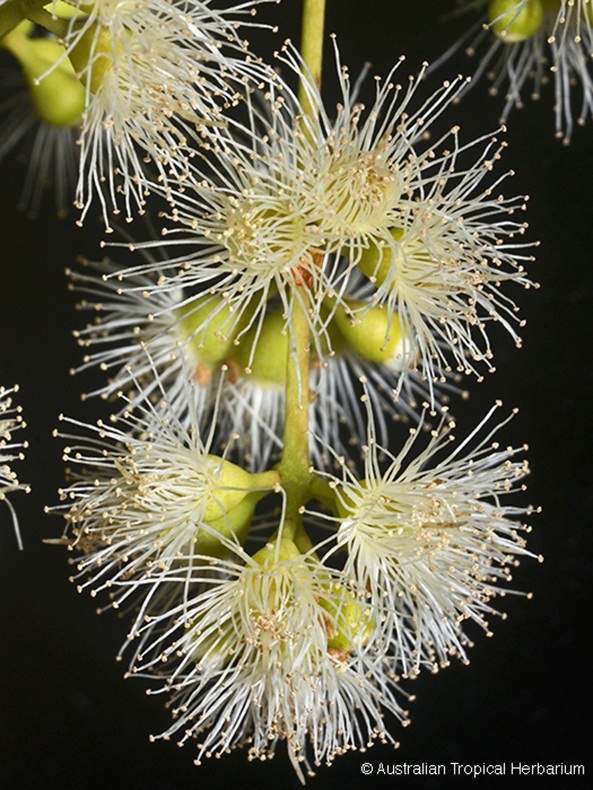
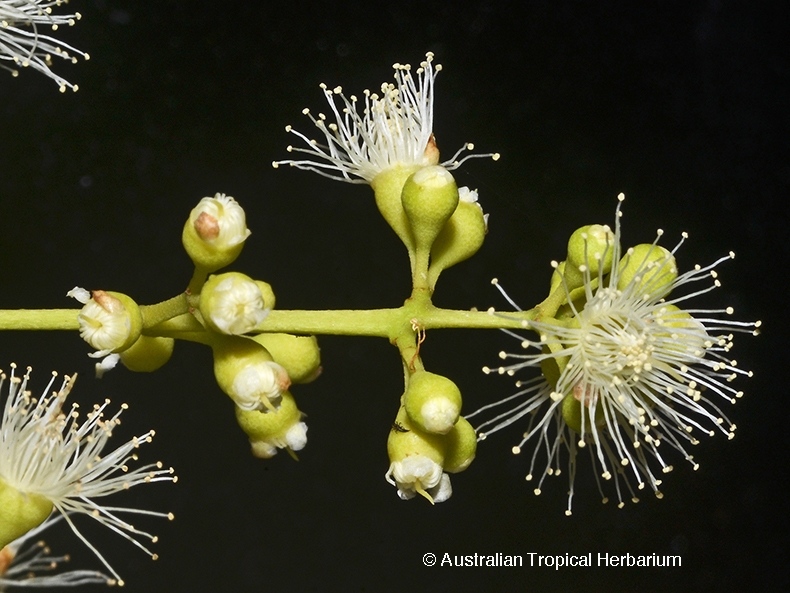
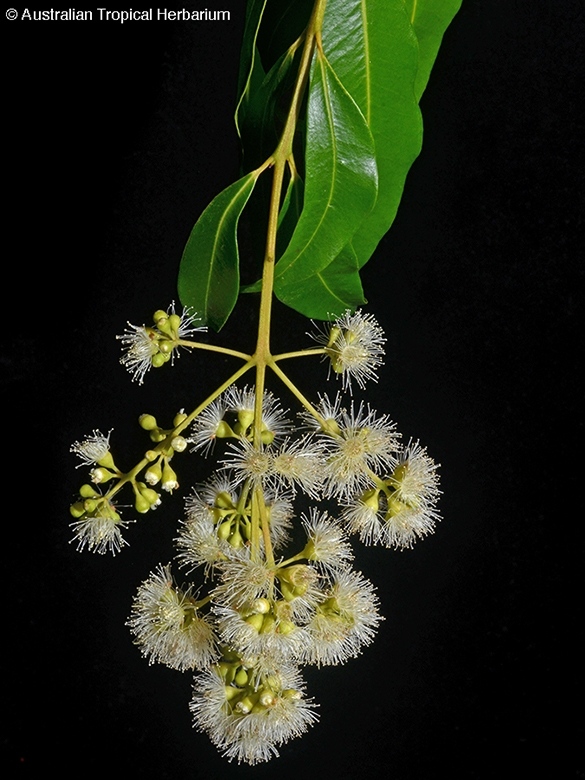
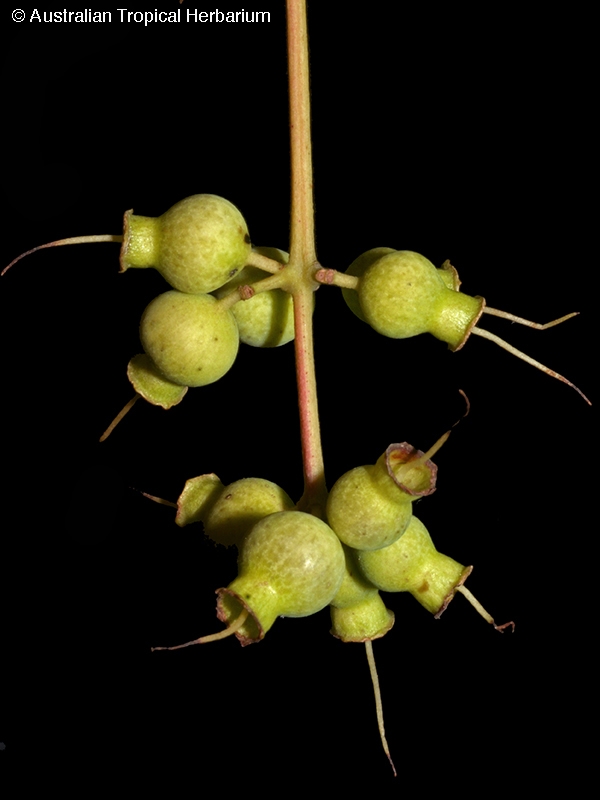



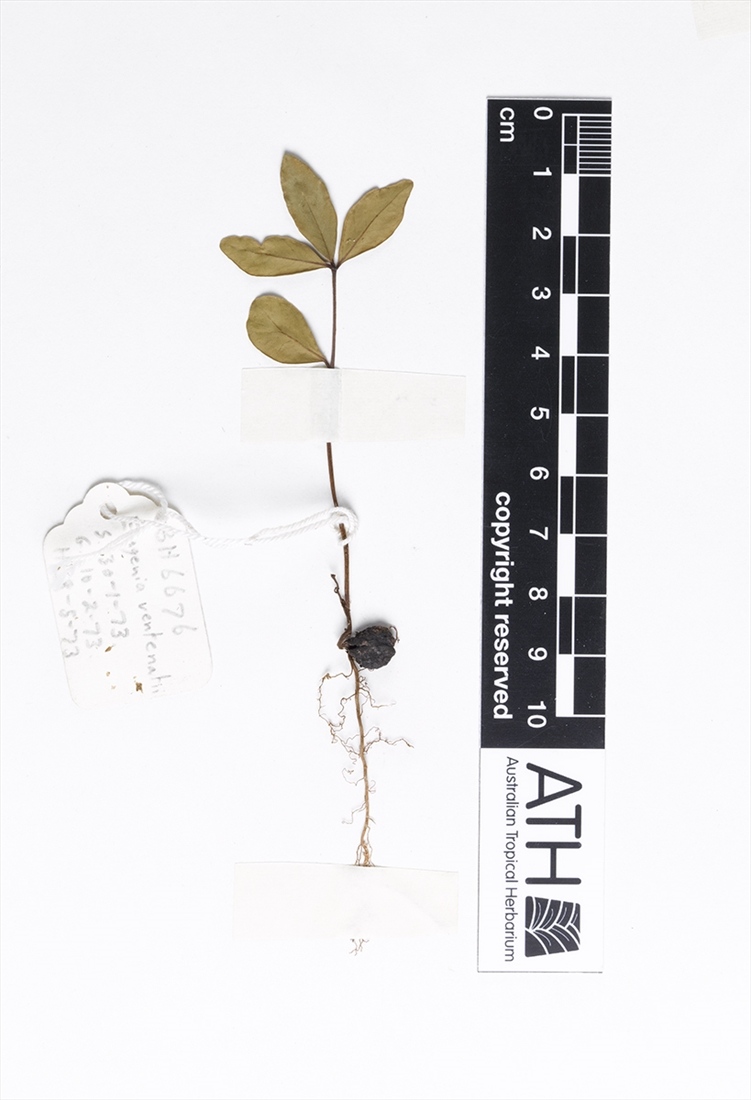

Mueller, F.J.H. von (1864) Fragmenta Phytographiae Australiae 4(26): 58. Lectotype: F. Mueller, Moreton Bay, MEL 67216.
Weeping Lilly Pilly
Tree to 30 m tall and 80 cm dbh, frequently smaller. Stem without buttresses.
Inflorescence terminal, bracts deciduous absent at anthesis. Flowers 4-5-merous. Calyx tube (hypanthium) + pedicel about 3-6 mm long, calyx tube (hypanthium) about 2-4 mm diam., calyx lobes small and inconspicuous, broadly triangular, less than 0.5 mm long. Petals cohering and shed as an operculum, each petal +/- orbicular, 1-2.0 mm diam., 1-3 main veins visible, oil dots comparatively large, about 20-40 per petal. Outer staminal filaments about 3-7 mm long, anthers about 0.4 x 0.4 mm, gland inconspicuous, terminal on the back of the anther. Ovules about 4-6 per locule. Style about 4-10 mm long, approximating the stamens.
Fruits generally green but developing a pink or reddish tinge at maturity; globular, depressed globular, about 15-20 mm diameter, calyx tube (hypanthium) persisting as a distinct cup or rim at the apex of the fruit ca. 1-2 mm high, calyx lobes persistent but small and inconspicuous less than 0.5 mm long; pericarp quite thin, about 0.3 mm thick, forming an envelope around the cotyledons. Seed generally solitary, only slightly smaller than the fruit, testa absent or indistinguishable from the pericarp which is quite free from the cotyledons. Cotyledons ruminate with a conspicuous, hard, dark, tanniferous inclusion in the centre. Radicle lateral, cotyledonary stipules present but quite inconspicuous.
Cataphylls about 4-5, alternate, leaves initially alternate, subsequently opposite or in whorls of 3, lignotubers absent. Seed germination time 10 days.
1287





